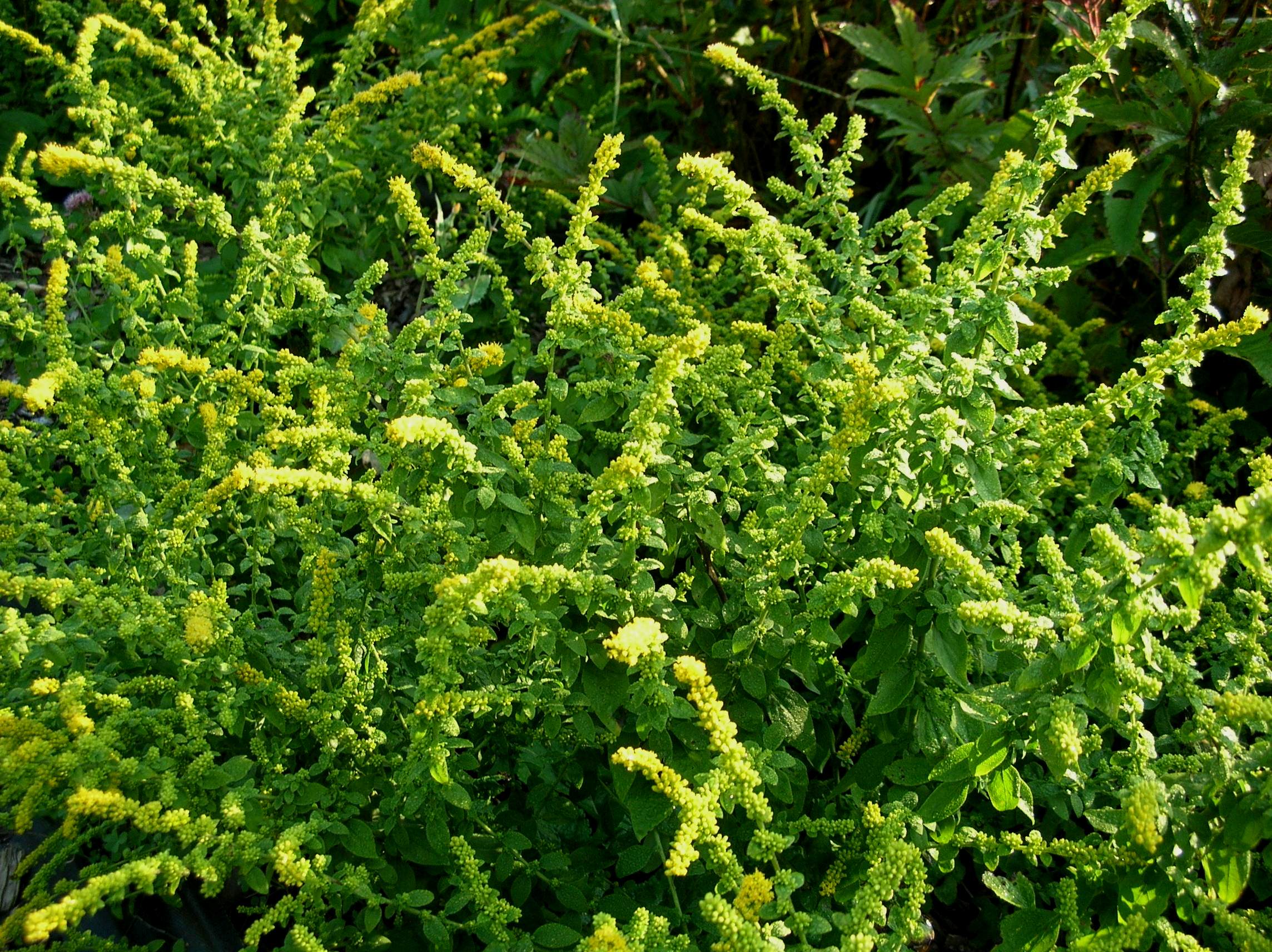Description
ARCHIVED
Note: This is a plant not currently for sale. This is an archive page preserved for informational use.
Dense horizontal golden panicles on this dwarf Goldenrod, August to September
Dense horizontal golden panicles on this dwarf Goldenrod, August to September
ARCHIVED
Note: This is a plant not currently for sale. This is an archive page preserved for informational use.
Dense horizontal golden panicles on this dwarf Goldenrod, August to September
ARCHIVED
Note: This is a plant not currently for sale. This is an archive page preserved for informational use.
In colder areas grow as annual
Spectacular basal foliage – arching, silvery, deeply incised leaves. Late summer-fall spiny buds open to rich purple feathery flowers.
Size: 3-4’ x 3-4’
Care: sun in moist well-drained to well-drained soil. Cut off flowers immediately after flowering to bring on new foliage, gorgeous into late fall.
Native: Southern Europe
The leaf stems, blanched, are also edible. Bridgemen, The Young Gardeners Assistant (1847)
Described by Linneaus 1753.
ARCHIVED
Note: This is a plant not currently for sale. This is an archive page preserved for informational use.
Adorable dwarf shrub bearing orange-red blooms in July and August then tiny, edible pomegranates. Where not hardy makes good container plant and bonsai.
Size: 2-4’ x 2-4’
Care: sun to part shade in moist well-drained to well-drained soil
Native: Europe to Himalayas
“The plants will bear miniature fruit if grown in areas with year-round temperatures that rarely fall below 40° F. To grow indoors, moderate night-time temperatures should be given (50° to 60° F). Keep at 40° to 45° F in winter until new growth appears. In the growing period, keep moderately moist. Water sparingly from August on. This plant requires good drainage. Plants will bear fruit indoors if grown in a sunny exposure.” Issour Botanic Garden. It is deciduous and may lose its leaves.
This dwarf described in 1803.
ARCHIVED
Note: This is a plant not currently for sale. This is an archive page preserved for informational use.
Small gentian flowers with golden eyes, spring into fall.
Can not ship to: New Hampshire
Size: 9-12” x 12”
Care: sun to part shade in moist soil
Native: temperate areas world wide
“Myosotis” is Greek meaning mouse ear for the leaf shape. Around 1390 Henry IV adopted soveigne vous de moy, Forget-me-not, as a symbol not to forget his reign. A German legend attributes the common name to a lover who, gathering the flower, cried out “forget-me-not” as he fell into the river and died. Alfred Lord Tennyson wrote: “The sweet forget-me-nots; That grow for happy lovers.” Persian poet Shiraz told another folk tale: an angel fell from heaven by falling in love with a “daughter of earth,”when they sat by a river twining Forget-me-not flowers in her hair. The angel was not allowed to return until the lovers planted Forget-me-nots in every corner of the earth, which they did, hand in hand. She then became immortal “without tasting the bitterness of death” and joined the angel in Paradise.
ARCHIVED
Note: This is a plant not currently for sale. This is an archive page preserved for informational use.
Spikes of cobalt blue hooded blooms September – October POISON
Size: 24-36”x 10”
Care: part shade in moist soil
Native: No. Japan, E. Russia, Korea, China
Wildlife Value: Deer resistant. Attracts butterflies.
The name Aconitum is from the mythical hill Aconitus in Pontica where Hercules fought with Cerberus. Philip Miller in The Gardener’s Dictionary (1768) wrote that the name Aconitum comes from Greek word for dart “because the Barbarians used to daub their darts therewith.” The Monkshood reputedly sprang from the jaws of Cerberus, the guard dog of the underworld. In China called “bao ye wo tou.” Wm. Robinson considered this one of the best monkshoods. Collected before 1820.

